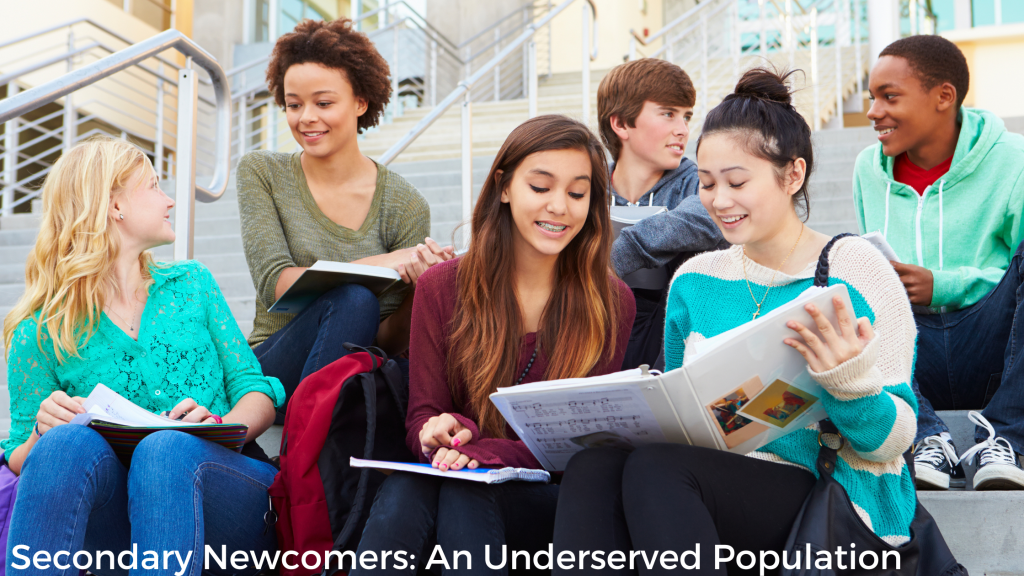Overcoming Challenges Faced by Secondary Newcomers: Building a Path to Success
The United States has long been a destination for immigrants seeking new opportunities and a better life. Among this group are middle and high-school-age newcomers. Older students face unique challenges adapting to a new country, culture, and educational system. For their newcomer students to thrive, educators must address their unique social-emotional development and English language acquisition needs.
Cultural Adjustment
Teenage newcomer students to America often face challenges in adapting to their new culture. They may encounter profound cultural differences encompassing social norms, customs, and values. For example, students coming from certain Asian cultures may not be comfortable asking for clarification if they don't understand a concept. So, while a teacher believes all is well understood when there are no questions asked, this can be far from reality.
Therefore, educators who work with newcomers should be mindful of their students' cultural differences as well as be empathetic to their struggles with acculturation and socialization. In short, develop cultural competence. Cultural competence also means viewing and treating the diverse cultural and language backgrounds of their students as "assets" and not "deficits".
To help with cultural adjustment, educators may want to explicitly cover topics such as American customs, holidays, and traditions with their newcomer students. Exploring aspects of U.S. culture and asking students to relate these with those found in their heritage helps newcomer students feel valued and accepted.
Social Integration
It's important to prioritize the newcomer student's social and emotional health. Before any learning can take place (which is a part of self-actualization), newcomers need to feel welcomed and accepted by their peers. Learning how to fit in and make a friend is a top-of-mind concern. However, it can be challenging to navigate social dynamics in an unfamiliar environment.
Encouraging students to participate in, and explore their existing interests opens up opportunities to meet like-minded peers and forge new friendships outside the classroom. Secondary-grade newcomers should be made aware of extracurricular activities, such as sports, clubs, or volunteer organizations, offered at their new school.
Discuss with students school traditions like prom, homecoming, pep rallies, and sports games. While not "mandatory" to attend, explain that these fun events can help them feel more connected to their new school.
Language Barriers and Communication
The language barrier is one of the most significant obstacles for high school-age newcomer students. Some newcomers may have minimal or no prior exposure to the English language due to limited or interrupted formal education. For these students, it is important to expose them to critical "functional" vocabulary as a first step. Use highly visual or multi-sensory tools to ensure students can access tasks and content.
Schools can provide language support programs, such as designated time for English Language Development (ELD) to help students focus on developing language skills. This designated time should be daily and significant — at least 45 min to 1 hour per day. Furthermore, educators should use appropriately leveled and English Language Proficiency standards-aligned instructional resources during this time.
Educational System Variations
The academic system in a new country may differ from what newcomer English Language Learners (ELLs) are accustomed to, posing additional struggles. So, understanding "school culture" is important.
Educators should make newcomers aware of the formal institutions and networks at school available to help them. Introduce newcomers to useful school resources like academic counselors, administrators, nurses, social workers, and resource officers. Seeking help when needed can enhance understanding of coursework and facilitate academic success.
Newcomers also need to learn the school’s policies, like the code of conduct, dress code, behavior expectations, attendance policies, and other processes that may differ from their previous experience.
Aside from learning where to go for help and the established school rules, making sure newcomers know what to do in case of an emergency is also important. Preparing students for fire and other types of practice drills that might occur during the school day, and who to follow when one happens, can help students stay safe while navigating the school environment.
Summary
While newcomer multilingual learners face a range of challenges, they also possess incredible resilience and adaptability. By utilizing strategies to help newcomers adapt to a new culture, embrace social integration, overcome language barriers, and address academic challenges, newcomer students can better navigate the hurdles, building a solid foundation for academic and personal success. With the right support and mindset, they can truly thrive in their new educational journey.
"... educators who work with newcomers should be mindful of their students' cultural differences as well as be empathetic to their struggles with acculturation and socialization."
 About the Author
About the Author
Mary Purcell is a certified teacher and administrator in the states of New Jersey and Delaware with a Master’s in Educational Leadership and School Business Administration. She spent the better part of a decade teaching Literacy, History, and Health to middle school English Language Learners in an inclusion classroom. With a passion for education, she is an active contributor to Language Tree Online. For more information, connect with her on LinkedIn.
